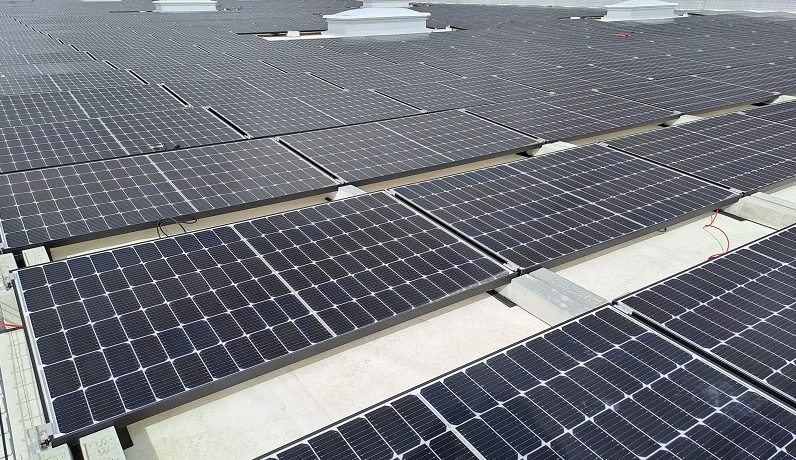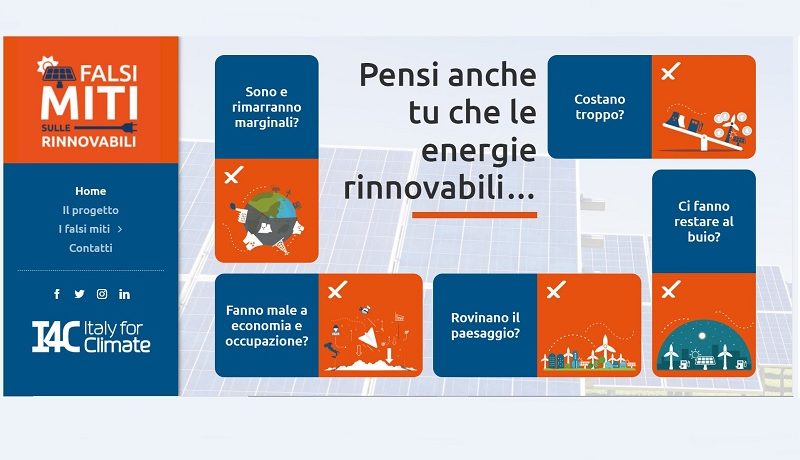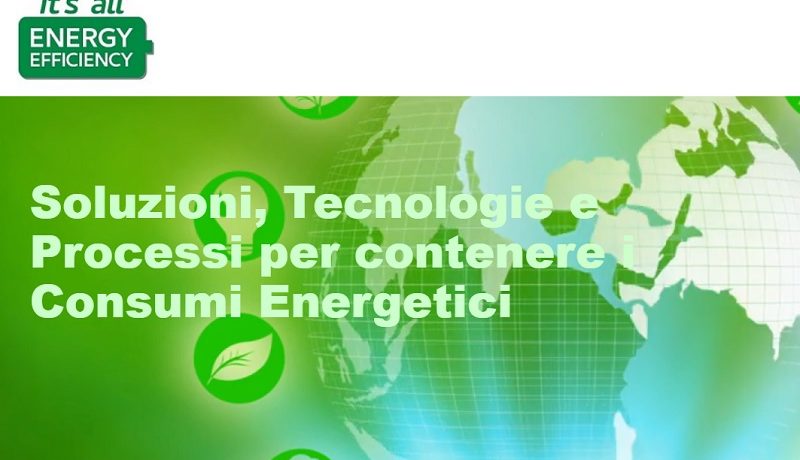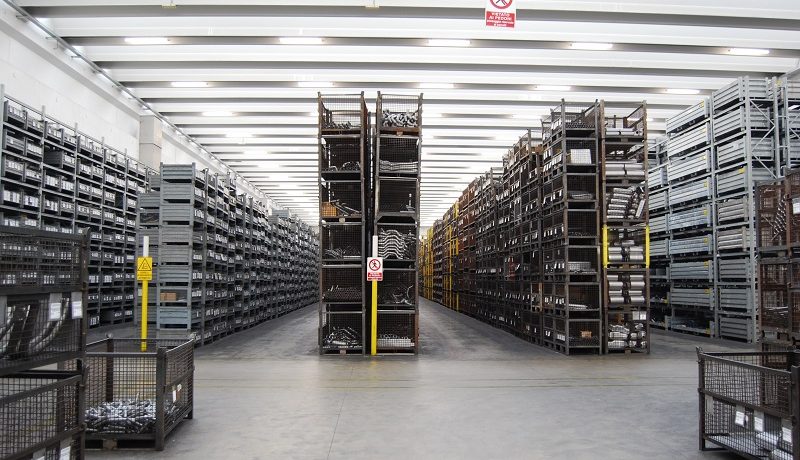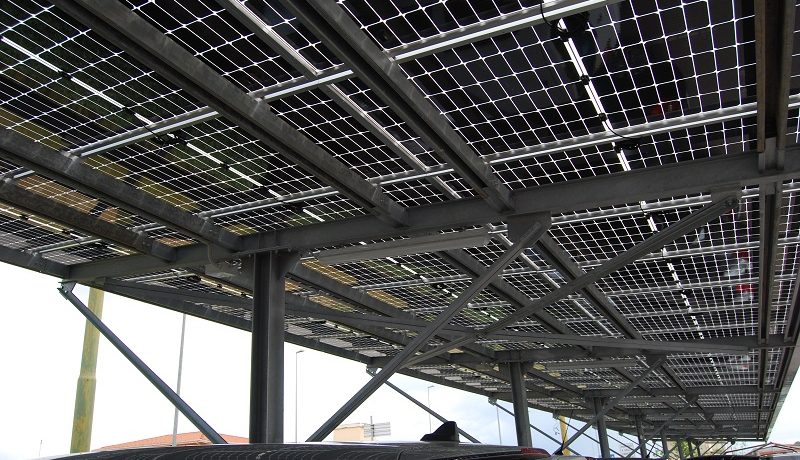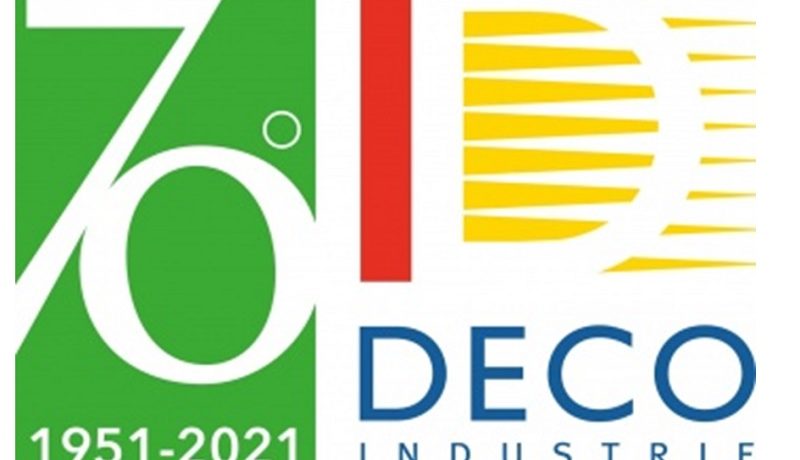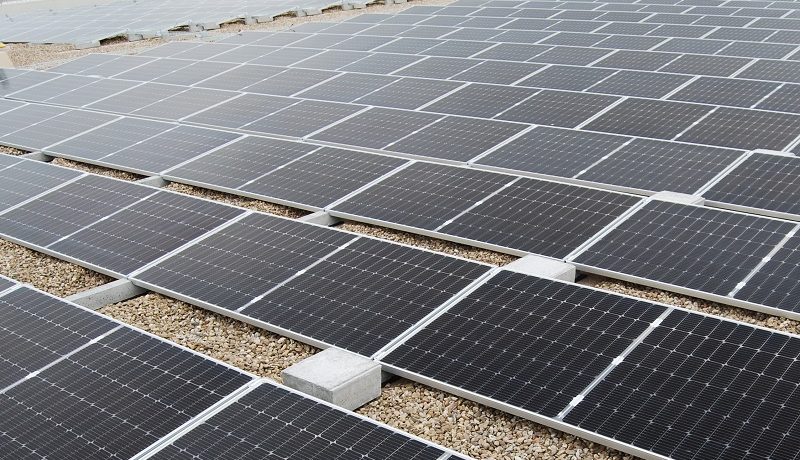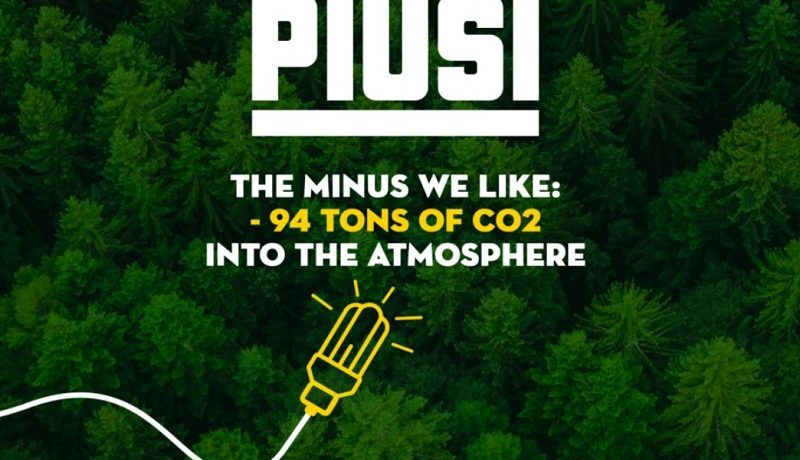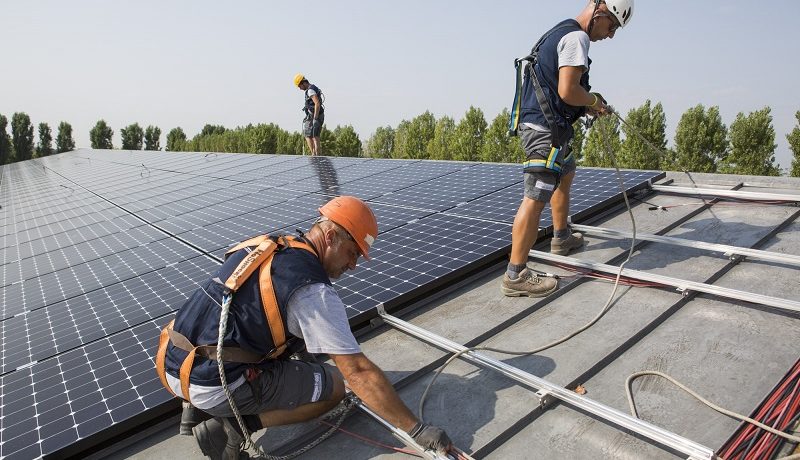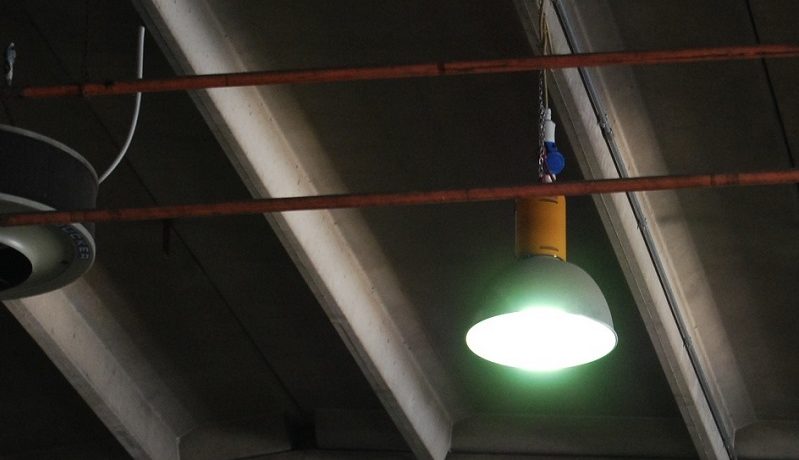Category: Tecnologie
Il sole per il Centro Cash di Sassari. SMARTEFFICIENCY per FOTOVOLTAICO. Il sole della Sardegna per il centro di distribuzione alimentare Ho.Re.Ca. dedicato ai clienti professionali di hotel e ristoranti
Energia a It’s All Efficiency. Si è tenuta l’edizione 2022 di It’s All Energy Efficiency, con Enrico Rainero moderatore nelle 4 sessioni, suddivise secondo i settori: Pubblica Amministrazione, Retail, Hospital, Industry.
Le testimonianze delle attività “sul campo” dei responsabili energy delle aziende sono sempre preziosissime, specialmente nei momenti in cui prendere le decisioni ed attuarle è sempre più difficile.
Illuminazione automotive. SMARTEFFICIENCY per ILLUMINAZIONE. Dal 1954, Imasaf crea eccellenza nel mercato del ricambio automobilistico. Anni di storia, crescita, conquiste, evoluzioni, investimenti con impiego di materiali ed attrezzature tecnologiche d’avanguardia.
Una realtà vera ai vertici del mercato nazionale ed internazionale per qualità ed innovazione.
Il sole per AbbiGroup a Oristano. SMARTEFFICIENCY per FOTOVOLTAICO. Un esempio semplice e completo di applicazione ESG: la tettoia fotovoltaica del parcheggio dei dipendenti. – ENVIRONMENTAL: taglio delle emissioni di CO2 – SOCIAL: attenzione al benessere per i dipendenti pendolari – GOVERNANCE: taglio dei costi della bolletta di energia e autonomia di approvvigionamento.
Abbiamo ottimizzato la produzione per il nostro cliente installando pannelli bifacciali per sfruttare anche la notevole quantità di luce riflessa, irradiata sotto alla tettoia.
La Tradizione illuminata. SMARTEFFICIENCY per ILLUMINAZIONE. Deco Industrie, proprietaria di Scala, il marchio del settore iscritto nel Registro Speciale dei Marchi Storici di Interesse Nazionale secondo il Ministero dello Sviluppo Economico, si è avvalsa della consulenza di SmartEfficiency per la riqualificazione illuminotecnica dei propri stabilimenti di Bagnacavallo (RA), Forlì (BO) e Zerbinate di Bondeno (FE). (altro…)
Il sole per il Centro Cash di Oristano. SMARTEFFICIENCY per FOTOVOLTAICO. Il Centro Cash di Oristano si trova accanto alla sede da cui iniziò l’attività della Famiglia Ibba, lo storico Mangimificio. Centro Cash è l’insegna del gruppo ABBI dedicata al mondo del Cash&Carry, attiva dal 2005 in Sardegna. (altro…)
Luce accurata per precisione Piusi. SMARTEFFICIENCY per ILLUMINAZIONE. SmartEfficiency ha gestito la riqualificazione dell’impianto di illuminazione dello stabilimento, personalizzando gli apparecchi secondo le diverse esigenze produttive dei vari reparti. L’iniziativa ha generato un ritorno dell’investimento in poco più di un anno. (altro…)
Fotovoltaico: se non ora, quando? SmartEfficiency da anni progetta ed installa con i propri fornitori impianti fotovoltaici di alta qualità che generano profitto per molte aziende che hanno creduto nella nostra proposta di energia solare ed hanno ridotto drasticamente i costi dell’energia nel ciclo produttivo.
Lampade al mercurio pericolose: i vapori di mercurio “vanno in pensione”. Dopo aver illuminato il lavoro di milioni di lavoratori nei capannoni industriali e di logistica, sono state definitivamente classificate come pericolose a causa della tossicità del mercurio. Sono state già messe in realtà fuori mercato, soppiantate dalle lampade a LED che, a parità di lux erogati, consumano il 70% di energia in meno e non hanno i tempi di attesa di riscaldamento per arrivare a piena luce e durano 10 volte di più, eliminando anche i costi di manutenzione, spesso ad altezze considerevoli.
SmartEfficiency.eu propone soluzioni personalizzate con progetto illuminotecnico per la sostituzione efficiente, di qualità ed economica. Le lampade al mercurio sono classificate dalla Direttiva ROHS (Restriction of Hazardous Substances)
per informazioni
02. 2641 7228
info@SmartEfficiency.eu
Mercury Lights out in the EU
The EEB and CLASP applaud the European Commission for adopting proposals that will phase-out all general purpose compact and linear fluorescent lamps (CFL and LFL) containing mercury in the coming two years.
Currently, the EU regulates mercury in light bulbs through the Restriction of Hazardous Substances (RoHS) Directive, by allowing mercury use in lighting via an exemption list. CFLs and LFLs have been tolerated so far because of the once limited availability of mercury-free alternatives.
For years the EEB, CLASP, Member States and experts have tirelessly campaigned to end mercury lamps as there are more efficient, mercury free Light Emitting Diodes (LEDs) widely available on European markets, making fluorescent lamps redundant. Already by end 2019, a study by CLASP and the Swedish Energy Council proved that “91-93% of fluorescent light fixtures in Europe can accept LED retrofits”.
Mercury is a well-documented neurotoxin that causes adverse effects to the developing brain, cardiovascular system, kidneys and thyroid glands. The World Health Organisation puts mercury in the top ten most problematic chemicals for public health.
The European Commission could have by law removed inefficient and toxic fluorescent lamps from sale as far back as 2018, when its own experts confirmed the legal criteria for a market ban under RoHS were fulfilled. Their availability until the end 2023 will still cost bill-payers an estimated over €16.8 million per day in lost efficiency savings for the next 2 years, according to recent NGO estimates.
Michael Scholand, Senior Advisor with CLASP Europe said: “While the Commission’s decision has been delayed several years, the savings from this measure are still significant and will benefit EU citizens and businesses. Between 2023 and 2035, we calculate a net savings to the EU of €18.2 billion Euros, as well as avoiding 1.8 metric tonnes of mercury from the fluorescent lamps. Furthermore, over 190 TWh of electricity will be saved, avoiding 55 million metric tonnes of CO2 andcontributing to the EU’s COP26 CO2 reduction targets.”
Elena Lymberidi-Settimo, Policy Manager at the EEB for ‘Zero Mercury’ Campaign said: “The European Parliament must now follow through this big step forward and allow rapid final adoption of a ban on these mercury inefficient lamps. At the same time, the EU should follow its commitments set out in the European Green Deal, Chemicals Strategy for Sustainability and Zero Pollution Action Plan and support the African region’s proposal at the next session of the Minamata Convention’s Conference of the Parties in March 2022, to prohibit the manufacture and export of most fluorescent lights by 2025.”
To the regret of NGOs, progress towards phasing out other mercury added lamps, such as high-pressure sodium (orange streetlights) and metal halide lamps, has not yet been made. The amendments to the RoHS Directive will still allow these mercury-containing lamps to remain on the market for the next 3-5 years at a minimum.
– Adopted delegated acts – https://webgate.ec.europa.eu/regdel/#/delegatedActs
– Electrical equipment – Revoking exemptions for mercury in single capped (compact) fluorescent lamps for general purposes – Environment – Delegated Directive
– Electrical equipment (hazardous substances) – revoking exemptions for mercury in double-capped linear fluorescent lamps – Environment – Delegated Directive
Delegated acts are now under scrutiny under the European Parliament for two months.
The original exemption for certain fluorescent lamps was granted in?September 2010?up to July 2016, allowing the lighting industry ample time to adapt its processes.
When a review process was launched in 2015, evidence presented by?the Commission’s own consultants (Öko Institut), as well as?the EEB, showed the ready availability of low-energy mercury-free LED alternatives and provided the justification for an early phase-out of the larger categories of mercury-containing fluorescent lamps.
The Commission ignored this evidence and wasted more than two years commissioning a socioeconomic analysis based on data that was already well out of date when it was eventually published in 2019 and was, therefore, completely misleading, indicating that the phase-out would have a net cost of €250 billion.
It took a further year and further evidence submitted by the EEB and others for the Commission to correct its mistake and issue in July 2020 a revised analysis showing that a 2021 phase-out would actually bring a net benefit of €29.9 billion.
More in the annex of our last letter to the Commission
– 16 November 2021 – https://eeb.org/library/eeb-contribution-to-the-public-consultation-amending-eu-regulation-649-2012/
– Podcast- 14 September 2021 – https://www.thelightreviewonline.com/the-real-dangers-of-greenwash/
– PR 27 July 2021- https://eeb.org/european-environmental-bureau-challenge-signifys-contradictory-claims/
– 26 July 2021 – https://eeb.org/library/environmental-ngos-feedback-on-draft-delegated-directive-for-rohs-exemption-categories-4b-4bi-iii-high-pressure-sodium-lamps-with-a-high-colour-rendering-index-80-for-general-lighting-purposes/
– 21 July 2021 – https://eeb.org/library/environmental-ngos-feedback-on-draft-delegated-directive-for-rohs-exemption-categories-1a-1e-single-capped-compact-fluorescent-lamps-for-general-lighting-purposes/
– 16 July 2021 – https://eeb.org/library/environmental-ngos-feedback-on-draft-delegated-directive-for-rohs-exemption-categories-2a1-5-double-capped-linear-fluorescent-lamps/
– https://eeb.org/library/environmental-ngos-feedback-on-draft-delegated-directive-for-rohs-exemption-category-1g/
– 12 July 2021 – https://eeb.org/library/environmental-ngos-feedback-on-draft-delegated-directives-for-rohs-exemption-categories-2b3-3-4c-4e-as-well-as-uv-light-related-1fi-2b4ii-4a-4fiv/
– PR 9 July 2021- https://eeb.org/higher-bills-for-millions-as-eu-lets-lighting-firms-milk-old-technology/
– PR 4 May 2021- https://eeb.org/africa-lights-a-path-for-europe-to-ban-toxic-mercury-in-fluorescent-bulbs/
– Feb 2021- https://eeb.org/library/why-hasnt-the-european-commission-banned-wasteful-lamps/
– Feb 2020 – https://eeb.org/library/mercury-containing-lamp-exemptions-to-rohs-directive/
– Jan 2020 – https://eeb.org/library/making-the-case-for-a-ban-on-mercury-lamps/
CLASP Europe is a non-profit, non-governmental organisation established in 1999 that focuses on appliance & equipment energy performance and quality. CLASP works to mitigate and adapt to climate change and expand access to clean energy.
Working in Europe since 2009, CLASP supports the European Commission and Member States in establishing ambitious ecodesign and energy labelling regulations.
CLASP has conducted pioneering work on quantifying the CO2 savings potential of applying circular economy principles to ecodesign and have been involved in various projects related to market surveillance and market verification and enforcement in Europe.
The European Environmental Bureau (EEB) is Europe’s largest network of environmental citizens’ organisations, standing for environmental justice, sustainable development and participatory democracy. Our experts work on climate change, biodiversity, circular economy, air, water, soil, chemical pollution, as well as policies on industry, energy, agriculture, product design and waste prevention.
We are also active on overarching issues as sustainable development, good governance, participatory democracy and the rule of law in Europe and beyond. We have over 160 members in over 35 countries.
ph. © Enrico Rainero

